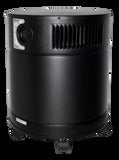Soil vapor intrusion in Alaska middle school
When the students and staff of a small middle school in an Alaskan town complained of nausea, dizziness and headaches, administrators had to consider possible environmental causes to pinpoint the problem and find a solution.
The school was located in a building that used to be a military base and experts suspected that a number of chemical spills had contaminated the water, soil and air around the building.
The suspicions proved to be true when tests revealed high concentrations of trichloroethylene (TCE) in the ambient air of the building.
The school’s 40 students and 5 staff members were exposed to the chemical that was seeping indoors.
Trichloroethylene is a clear, non-flammable liquid with a sweet smell.

What is TCE?
According to the EPA, exposure to trichloroethylene affects the central nervous system causing headaches, confusion, weakness and dizziness. The industrial solvent has also been associated with kidney and liver problems, as well as cancer of the cervix and lympathic system.
In a list of TCE toxicity values, the EPA characterized the chemical as a human carcinogen and a non-carcinogenic health hazard. According to the EPA, TCE is carcinogenic to humans by all routes of exposure.
It also says that TCE, perchloroethylene (PCE), and trichloroethane (TCA) are the most frequently detected volatile organic chemicals (VOCs) in groundwater in the United States (Fischer et al., 1987).

Activated carbon removes TCE
To find a solution for the middle school in Alaska and to locate the source of the contamination, the soil surrounding the school had to be excavated. Then a variety of tests followed. An indoor air quality test revealed that gaseous pollutants (i.e. TCE vapors) were trapped indoors.
The environmental program manager contacted Electrocorp and started a period of close collaboration to find a solution.
Based on the air sampling results, Electrocorp’s IAQ team recommended and delivered 1,200 pounds of an exclusive activated carbon blend in 30 industrious air scrubbers to be placed throughout the school.
The air purifiers could be moved to around easily and the deep-bed activated carbon filters offered a large internal surface area to adsorb chemicals. The carbon blend had a high adsorption capacity for TCE and other gaseous pollutants. It is one of the only filter media to be able to effectively adsorb toxic airborne contaminants such as TCE.
Running on a 24/7 basis on a low setting, these air cleaners removed 75 percent of the chemical contaminants in just 2 weeks, and the students as well as the staff reported a decrease in health symptoms.
Electrocorp recommended that the filters be changed every 3 months for maximum efficiency and best results.



